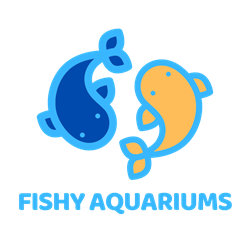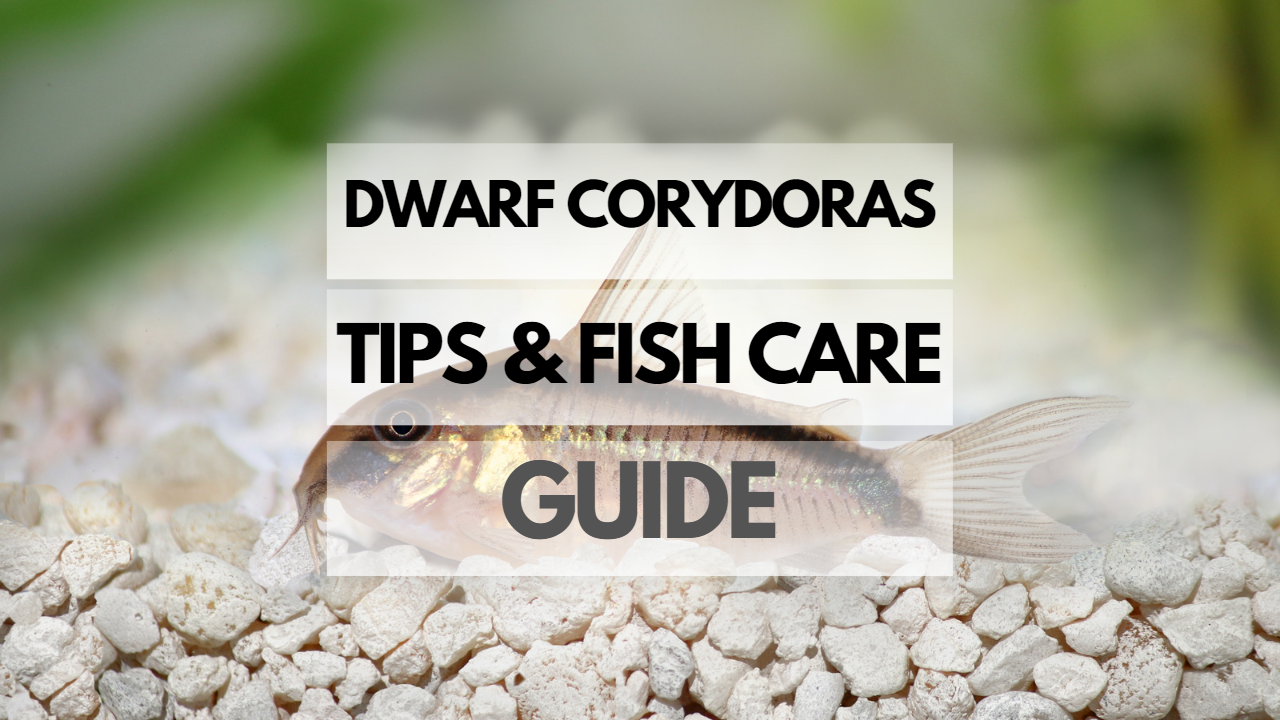Welcome to the ultimate guide to keeping Dwarf Corydoras as pets! These charming little fish make fantastic additions to any aquarium. In this guide, we’ll cover all the essential information you need to know to provide the best care for these adorable bottom-dwellers. So let’s dive in!
Quick Reference Table: Dwarf Corydoras Facts
| Fact | Details |
|---|---|
| Scientific Name | Corydoras hastatus |
| Ease of Care | Easy to moderate |
| Lifespan | 3-5 years |
| Color Variations | Silver with black markings |
| Size | 1-1.5 inches (2.5-3.8 cm) |
| Tank Size | Minimum 10 gallons |
| Water Temperature | 72-79°F (22-26°C) |
| Food | Omnivorous – sinking pellets, live or frozen foods |
| Can Survive in Bowls | No |
| Requires Filter | Yes |
| Requires Heater | Yes |
How Are Dwarf Corydoras as Pets?
Dwarf Corydoras make delightful pets due to their small size, playful nature, and peaceful temperament. They are social fish that thrive in groups, so they’re an excellent choice for a community tank. Watching them swim together and interact can be a joy for any fishkeeping enthusiast.
Are Dwarf Corydoras Easy to Care For?
Dwarf Corydoras are generally easy to moderate in terms of care. They are hardy fish that can adapt to a range of water conditions but are sensitive to poor water quality. As long as you maintain a clean, well-filtered tank, they should thrive.
Pros and Cons of Dwarf Corydoras
| Pros | Cons |
|---|---|
| Small size | Sensitive to poor water quality |
| Peaceful and community-friendly | Requires a group for optimal health |
| Active and entertaining | May require live or frozen foods |
| Hardy and adaptable | Not suitable for bowls |
How Much Do Dwarf Corydoras Cost?
Dwarf Corydoras are typically priced between $3 and $5 per fish. The initial setup cost for a 10-gallon tank, filter, heater, and decorations can range from $100 to $200. Ongoing expenses include food, water conditioner, and occasional replacement of equipment.
Dwarf Corydoras Lifespan
With proper care, Dwarf Corydoras can live for 3 to 5 years. Factors such as water quality, diet, and stress can impact their lifespan. Committing to keeping Dwarf Corydoras means providing them with the best possible environment to ensure they live a long and healthy life.
Dwarf Corydoras Care Guide
Dwarf Corydoras Habitat and Tank Setup
Appropriate Dwarf Corydoras Tank Size and Type
A minimum tank size of 10 gallons is recommended for Dwarf Corydoras, but a larger tank is preferred if you plan to keep a group or add other fish. A long, shallow tank with plenty of horizontal swimming space is ideal.
Dwarf Corydoras Water Temperature and Quality
Maintain a water temperature between 72-79°F (22-26°C) and a pH level of 6.0-7.5. Regular water changes and using a quality water conditioner are essential for keeping the water parameters stable and preventing ammonia and nitrite spikes.
Filtration and Aeration Requirements
Use a filter with gentle water flow to keep the tank clean without causing too much disturbance. Sponge filters are a great choice for Dwarf Corydoras as they provide gentle aeration and help maintain water quality.
Lighting Requirements
Standard aquarium lighting will suffice for Dwarf Corydoras. They do appreciate some shaded areas, so adding plants or decorations that provide cover can make them feel more secure.
Plants for Dwarf Corydoras
Live plants like Anubias, Java Moss, and Java Fern provide hiding spots and improve water quality. Floating plants like Amazon Frogbit can also help create shaded areas and make your Dwarf Corydoras feel more comfortable.
Substrate, Hideouts and Decorations
Use a soft, sandy substrate to protect the Dwarf Corydoras’ sensitive barbels as they search for food. Provide caves, driftwood, or PVC pipes for them to hide in and explore. Be sure to leave open areas for swimming as well.
Aquarium Cleaning and Maintenance
Perform regular water changes, at least 20-30% weekly, to maintain water quality. Clean the substrate using a gravel vacuum to remove debris, and occasionally clean the filter to ensure proper function.
Dwarf Corydoras Food and Diet
What Do Dwarf Corydoras Eat?
Dwarf Corydoras are omnivorous and require a balanced diet of sinking pellets, as well as live or frozen foods like brine shrimp, daphnia, and bloodworms. They will also enjoy vegetables like blanched spinach and cucumber.
Feeding Frequency and Schedule
Feed your Dwarf Corydoras once or twice daily, offering small amounts of food they can consume within a few minutes. Monitor their feeding habits to avoid overfeeding, which can lead to poor water quality and health issues.
Dwarf Corydoras Treats
Occasionally offer treats like live or frozen foods to add variety to their diet and promote optimal health. Vegetables can also be provided as a treat and a source of essential vitamins and minerals.
Health and Wellness
Common Health Issues
Dwarf Corydoras can face a few common health issues such as:
- Fin rot: A bacterial infection that affects the fins and can be treated with broad-spectrum antibiotics.
- Fungal infections: These can be treated with over-the-counter antifungal medications.
- Ich: A parasitic infection that causes white spots on the fish’s body. It can be treated with ich medication.
Signs of a Healthy Dwarf Corydoras
Here’s a table comparing a healthy Dwarf Corydoras vs. a sick one:
| Healthy Dwarf Corydoras | Sick Dwarf Corydoras |
|---|---|
| Clear eyes | Cloudy or swollen eyes |
| Good appetite | Lack of appetite or weight loss |
| Active and social behavior | Lethargy or hiding |
| Intact, smooth fins | Torn or frayed fins |
| No visible spots or growths on body | White spots, cotton-like growths, or ulcers on body |
Dwarf Corydoras Breeding
To breed Dwarf Corydoras, you’ll need a separate breeding tank with soft, acidic water and plenty of hiding spots. Condition the fish with high-quality foods, and perform regular water changes to encourage spawning.
Dwarf Corydoras Tank Mates: Can They Live with Other Fish?
Yes, Dwarf Corydoras can live with other peaceful fish species. They make great tank mates for small schooling fish like tetras, rasboras, and guppies. Avoid aggressive or large fish that may see the Dwarf Corydoras as prey.
Dwarf Corydoras Varieties and Species
There are several species of Dwarf Corydoras, including:
- Corydoras habrosus
- Corydoras hastatus
- Corydoras pygmaeus
These species vary slightly in appearance, but all have the same overall shape and behavior.
Additional Resources
Check out these resources to learn more about Dwarf Corydoras:
- Dwarf Corydoras Facebook Group
- Fishlore’s Pygmy Corydoras Care Guide
- Seriously Fish’s Corydoras habrosus Profile
FAQ for Dwarf Corydoras Care
- Q: Can Dwarf Corydoras live with other fish?
- A: Yes, they can live with other peaceful fish species like tetras, rasboras, and guppies.
- Q: How long do Dwarf Corydoras live?
- A: With proper care, they can live for 3-5 years.
- Q: How often should I clean my Dwarf Corydoras’ tank?
- A: Perform a 25% water change every week to maintain good water quality.
- Q: Can Dwarf Corydoras change color?
- A:No, they don’t change color, but their coloration may appear more vibrant in a well-planted tank with a dark substrate.
- Q: Are Dwarf Corydoras good for beginners?
- A: Yes, they are relatively easy to care for and make a great addition to a beginner’s aquarium.
- Q: Do Dwarf Corydoras need a filter?
- A: Yes, a filter helps maintain good water quality and provides oxygenation for the fish.
- Q: Do Dwarf Corydoras need a heater?
- A: Yes, they prefer a stable temperature of 72-79°F (22-26°C), which may require a heater depending on your room temperature.
- Q: Can Dwarf Corydoras survive in bowls?
- A: No, bowls are not suitable for any fish, including Dwarf Corydoras. They need a proper aquarium with a filter, heater, and ample swimming space.
- Q: Do Dwarf Corydoras sleep?
- A: Yes, they do rest, but they don’t have eyelids, so it may not appear as if they are sleeping.
- Q: Can Dwarf Corydoras live with snails?
- A: Yes, they can coexist with snails without any issues, making them a good addition to a community tank.

